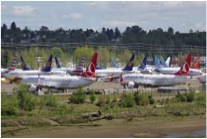Things never stay the same. Customer preferences change. Processes, products and services age. Competition erodes a competitive advantage. Yet, we are still responsible for delivering customer value, a concept at the center of every Lean Six Sigma initiative.
Yet, how do we keep up with these changes? How do we ensure customer value? The answer is simple. We must establish and maintain an organizational culture that is committed to continuous improvement.
 Warren G. Bennis, professor of business at the University of Southern California and a pioneer in the field of leadership said it very well, “In life, change is inevitable. In business, change is vital.” To keep our organizations vital, then, continuous change is an absolute necessity.
Warren G. Bennis, professor of business at the University of Southern California and a pioneer in the field of leadership said it very well, “In life, change is inevitable. In business, change is vital.” To keep our organizations vital, then, continuous change is an absolute necessity.
The improvements brought on by a culture of continuous improvement do not necessarily have to be major or disruptive. Rather, it is even more important to create a culture where many of these changes are small, incremental and continuous, and where these changes focus on continually improving the design, processing and delivery of the organization’s products and services.
 There is an interesting book written by a Crowley and Lodge, “Younger Next Year.” It captures the concept of continuous improvement and its basic premise is that normal aging is not normal and that through a consistent program of exercise people can become more lean and fit as they age. When followed, the authors promise better and better health every year. But the authors warn that most people can’t go from where they are today to where they want to be instantly. If they expect that outcome, they will be disappointed. Instead it is more reasonable to expect slow and continuous improvement.
There is an interesting book written by a Crowley and Lodge, “Younger Next Year.” It captures the concept of continuous improvement and its basic premise is that normal aging is not normal and that through a consistent program of exercise people can become more lean and fit as they age. When followed, the authors promise better and better health every year. But the authors warn that most people can’t go from where they are today to where they want to be instantly. If they expect that outcome, they will be disappointed. Instead it is more reasonable to expect slow and continuous improvement.
 Continuous improvement applies across the organization but has become increasing important in product and software design. One expression of this concept is called Minimum Viable Product or MVP. It is an approach to design where a simple but functional product is introduced early into the marketplace. Then, based on feedback, the product is subjected to a series of improvements through time. In software, new releases, offer more and more functionality and, because they embody improvements, they frequently command better and better market share.
Continuous improvement applies across the organization but has become increasing important in product and software design. One expression of this concept is called Minimum Viable Product or MVP. It is an approach to design where a simple but functional product is introduced early into the marketplace. Then, based on feedback, the product is subjected to a series of improvements through time. In software, new releases, offer more and more functionality and, because they embody improvements, they frequently command better and better market share.
However, continuous improvement is far more difficult than it sounds. Why? Resistance to change.
People don’t like change. It’s human nature. But they do respond in a crisis. In in a Harvard Business Review article by John Kottler titled “Leading Change: Why Transformation Efforts Fail”, he suggests that resistance to change can only be overcome during an organization crisis. Underscoring the importance of change, Schaffer in a more recent Harvard Business Review article contends that all management is change management. This certainly explains why a good part of management’s responsibilities must overcome resistance to change.
Another source of resistance can be traced to financial pressures. Often improvement requires abandoning some approaches while introducing others; equipment must be scrapped, old procedures abandoned and even personnel changed. This can be costly.
 The Boeing 737 Max 8 was one of the most successful aircraft in aviation history. When two of them crashed and it became obvious that designers needed to return to the drawing board and “improve” their design, management resisted grounding the remaining planes. At stake were financial repercussions in the billions of dollars. In this situation, safety trumped financial pressures and the entire fleet of planes was grounded for months.
The Boeing 737 Max 8 was one of the most successful aircraft in aviation history. When two of them crashed and it became obvious that designers needed to return to the drawing board and “improve” their design, management resisted grounding the remaining planes. At stake were financial repercussions in the billions of dollars. In this situation, safety trumped financial pressures and the entire fleet of planes was grounded for months.
 Clearly it is beneficial when continuous improvement becomes part of the organization’s culture, yet it has proven to be such a difficult goal to achieve. One major reason is communication. To succeed, all stakeholders must be open to two-way communication: speaking and listening. Previous conceptions, commitments and alliances must be cast aside.
Clearly it is beneficial when continuous improvement becomes part of the organization’s culture, yet it has proven to be such a difficult goal to achieve. One major reason is communication. To succeed, all stakeholders must be open to two-way communication: speaking and listening. Previous conceptions, commitments and alliances must be cast aside.
In short, continuous improvement is central to the objectives of any Lean Six Sigma strategy; without continuous improvement it is difficult to consistently deliver market-based efficiency and quality.



